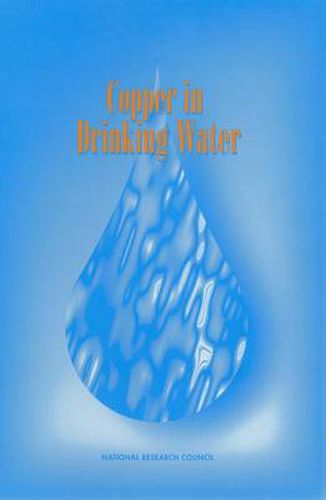Readings Newsletter
Become a Readings Member to make your shopping experience even easier.
Sign in or sign up for free!
You’re not far away from qualifying for FREE standard shipping within Australia
You’ve qualified for FREE standard shipping within Australia
The cart is loading…






The safety of the nation’s drinking water must be maintained to ensure the health of the public. The U.S. Environmental Protection Agency (EPA) is responsible for regulating the levels of substances in the drinking water supply. Copper can leach into drinking water from the pipes in the distribution system, and the allowable levels are regulated by the EPA. The regulation of copper, however, is complicated by the fact that it is both necessary to the normal functioning of the body and toxic to the body at too high a level. The National Research Council was requested to form a committee to review the scientific validity of the EPA’s maximum contaminant level goal for copper in drinking water. Copper in Drinking Water outlines the findings of the committee’s review. The book provides a review of the toxicity of copper, as well as a discussion of the essential nature of this metal. The risks posed by both short-term and long-term exposure to copper are characterized, and the implications for public health are discussed. This book is a valuable reference for individuals involved in the regulation of water supplies and individuals interested in issues surrounding this metal.
$9.00 standard shipping within Australia
FREE standard shipping within Australia for orders over $100.00
Express & International shipping calculated at checkout
The safety of the nation’s drinking water must be maintained to ensure the health of the public. The U.S. Environmental Protection Agency (EPA) is responsible for regulating the levels of substances in the drinking water supply. Copper can leach into drinking water from the pipes in the distribution system, and the allowable levels are regulated by the EPA. The regulation of copper, however, is complicated by the fact that it is both necessary to the normal functioning of the body and toxic to the body at too high a level. The National Research Council was requested to form a committee to review the scientific validity of the EPA’s maximum contaminant level goal for copper in drinking water. Copper in Drinking Water outlines the findings of the committee’s review. The book provides a review of the toxicity of copper, as well as a discussion of the essential nature of this metal. The risks posed by both short-term and long-term exposure to copper are characterized, and the implications for public health are discussed. This book is a valuable reference for individuals involved in the regulation of water supplies and individuals interested in issues surrounding this metal.